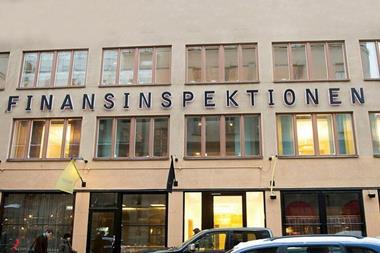The year 2003 was a record one for cross border investment in the Nordic property market. That year a total of E5.1bn of foreign money was invested in Swedish, Norwegian, Danish and Finnish property, according to DTZ’s Money Into Property Report. Nearly 80% of this money was invested in Sweden, being the largest and most developed property market in the region.
This year, Finland is the country that has seen the strongest growth in interest from foreign investors. In 2003 overseas purchases in Finland accounted for less than 40% of the total investment volume, whereas this year it is estimated at 50%. One reason for the increased interest from foreign investors is the robust Finnish economy which has been growing above EU average for the last few years and is forecast to continue expanding by 2.8% in 2004 and 3.0% this year, according to Consensus Forecasts. Furthermore, Finland’s legal and financial environment is clear and understandable, the property market is getting more transparent and the EMU membership removes the currency risk for Euro-zone investors.
However, there are still drawbacks, including the small size of the Finnish market and the lack of liquidity. Some of the largest transactions that have taken place in Finland are LR Swedish Properties’ (London and Regional) purchase of the companies Oy Skandrenting Ab and Dividum (hotels), and Doughty Hanson’s acquisition of a E350m shopping centre portfolio from pension insurance company Ilmarinen.
With foreign investments of E2bn so far this year (according to Jones Lang LaSalle) Sweden is still considered the most attractive Nordic country among foreign investors. A recovering economy and an anticipated recovery in the office market next year are driving the demand. However, in 2004 overseas investors have had to compete for stock with domestic investors such as Swedish institutions who are re-weighting their portfolios to reflect the stock market recovery.
There is also another, relatively new group of investors in the Swedish market – the domestic property funds that are rapidly increasing in number. Most of these funds are targeting institutions, but some of them have wealthy individuals as main clients. Residential property is the most coveted property type by the Swedish funds. This is because of the housing sectors’ attractive risk/return characteristics. As a result of the renewed national demand for stock, the split between foreign and domestic investors has changed from 75% foreign and 25% domestic in 2003 to 50:50 this year. Right now, the biggest problems facing investors is the fierce competition for stock and the lack of prime investment grade products. These trends are expected to continue in 2005.
Denmark has seen the investment market cooling in 2004 compared with 2003. In particular foreign investors have been less active. For example, the Danish retailer Magasin has sold its whole retail portfolio to Bank of Jutland and HSH Nordic Finance for E200m. Another big deal that has taken place in Denmark is Nordea Pension fund’s purchase of a E170m portfolio (mainly offices) from the insurance company Tryg.
Danish investors are also buying property in Sweden. This is mainly because of yield differentials. At the beginning of the year, the listed Danish property company Keops bought properties in southern Sweden from the Swedish property company PBA for approximately E120m. Later in the year the Swedish property company Tornet sold an E310m residential property portfolio in the south of Sweden to Keoterra AB, which is owned by the Danish listed company Keops A/S and Althén Pérez & Co. The deal was structured with a publicly traded bond issuance of E45m. Structure financing deals with publicly traded bonds are becoming increasingly attractive in Denmark because of the liquid and professional Danish bond market. The amount of transactions involving structured finance solutions is expected to increase in the future.
In 2005 the demand for retail property is expected to continue with additional deals being signed. New Danish retail funds are currently being launched and they will invest not only in Denmark but also in Sweden and Finland where the yields are higher. We may also see a trend of Copenhagen’s inner city offices being converted to residential. The thinking is that expensive inner city offices combined with a strong demand for residential property among pension funds and private investors could cause an outflow of office occupiers to the suburbs and open up possibilities for converting the inner city offices to residential properties.
Apart from the acquisition of Nordea’s office portfolio by IXIS/AEW Europe, international investors have taken little interest in Norwegian property. Norway’s exclusion from the EU and the lack of transparency in the property market are two reasons for the lack of international investment in Norway. Therefore, the Norwegian property market continues to be dominated by domestic players such as domestic limited partnerships and institutions. The interest from domestic players has been supported by some major changes in the Norwegian investment market.
A significant rise in private pension savings
has given the institutions a large influx of money that has to be invested, partly into commercial real estate. Furthermore, investors’ interest for
commercial property is supported by the low
interest rates, currently at 1.75%. Major transactions this year include Storebrand’s purchase of a portfolio in Lysaker/Nydalen (Oslo) from Industrifinans Næringseiendom ASA for NOK1.9bn (E228m).
There are currently more buyers than sellers of real estate in Norway, and some of the larger players are looking for investment opportunities in the other Nordic countries. For example, this year the insurance company Vital bought one hotel in Gothenburg and one office building in Stockholm for a total of SEK1.4bn (E157m). In terms of foreign markets the Norwegian investors are most interested in Stockholm and London. Storebrand is an example of a Norwegian institution that has invested indirectly in Europe.
Nordic property markets should remain active in 2005 with continuous interest from both domestic and foreign investors. Increased outflow of Nordic capital to markets outside the region, primarily via indirect vehicles in the UK and Continental Europe, is also anticipated.
Karin Witalis is an analyst in ING Real Estate’s global research team.












No comments yet